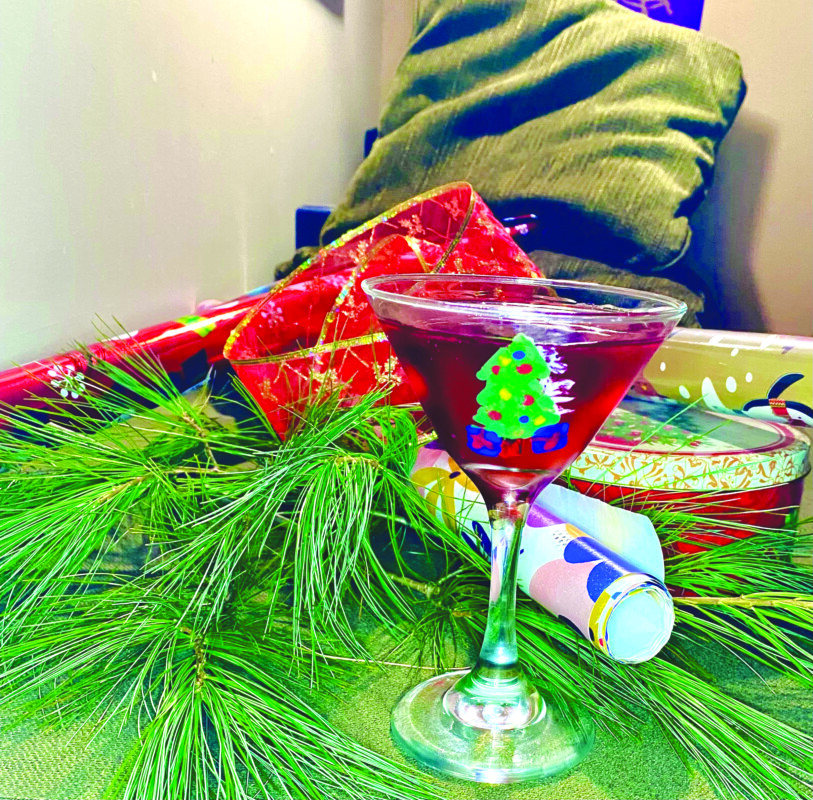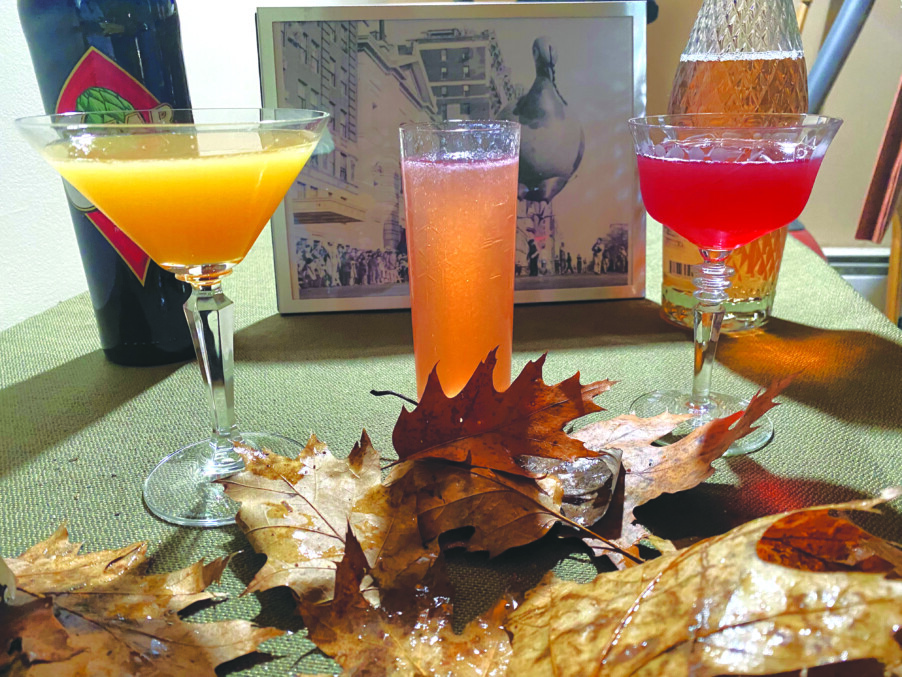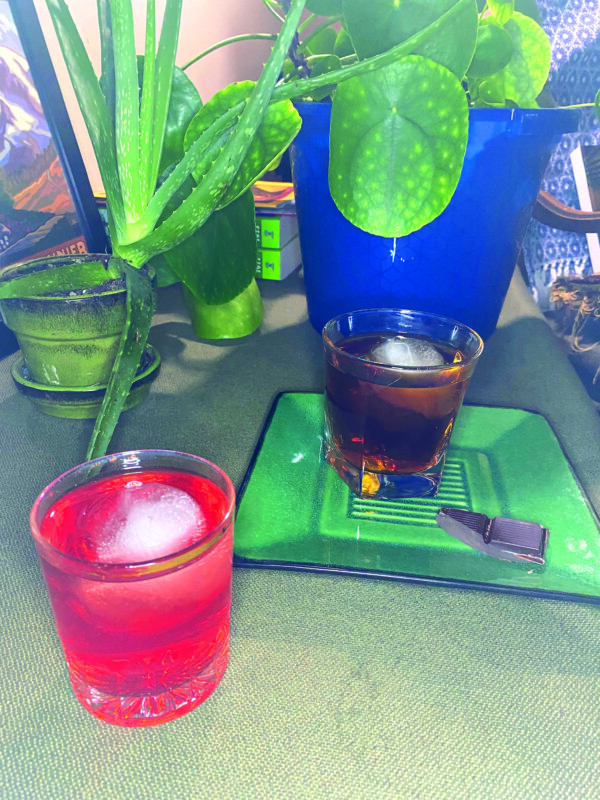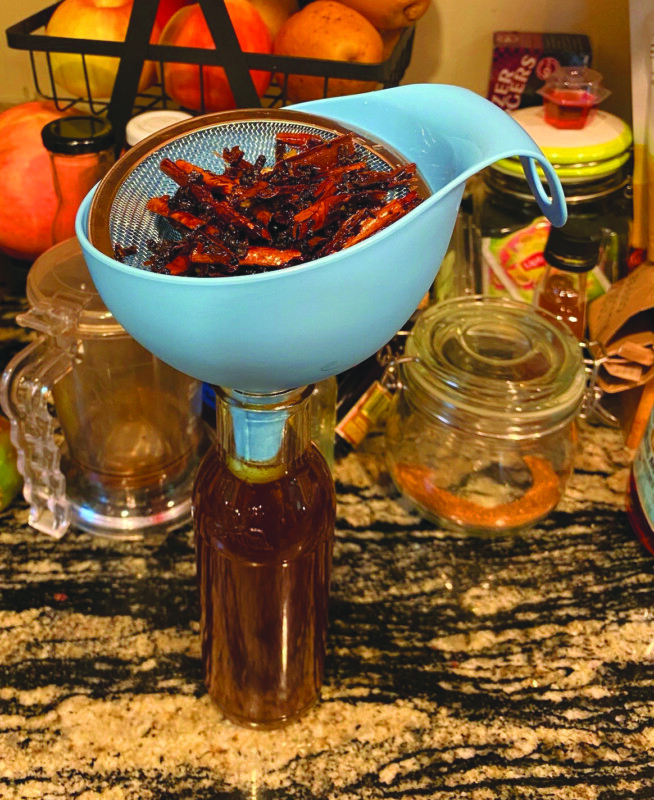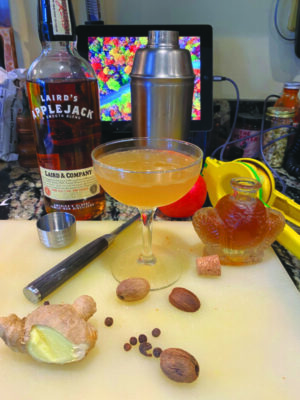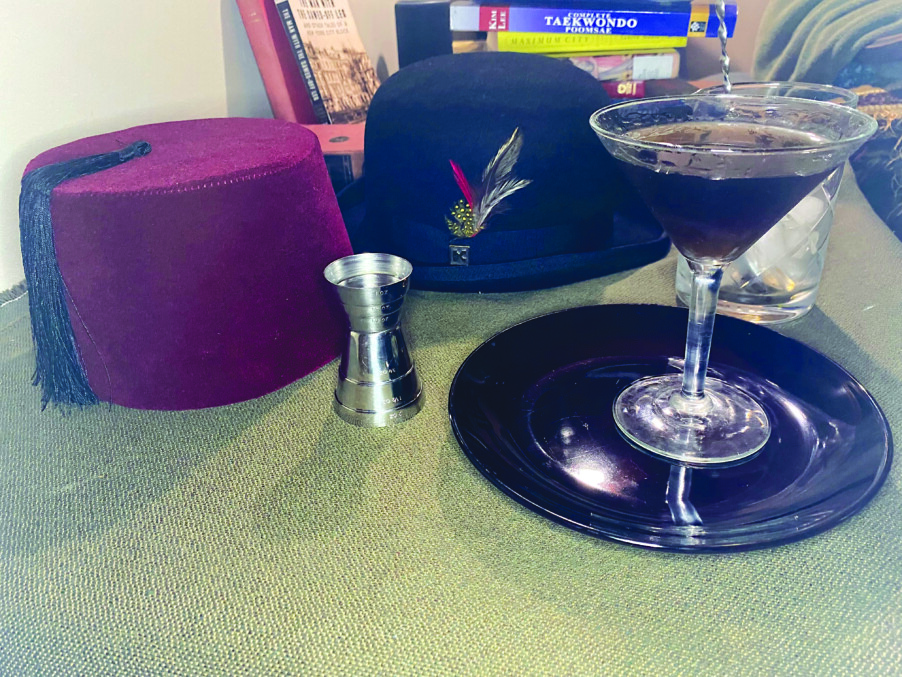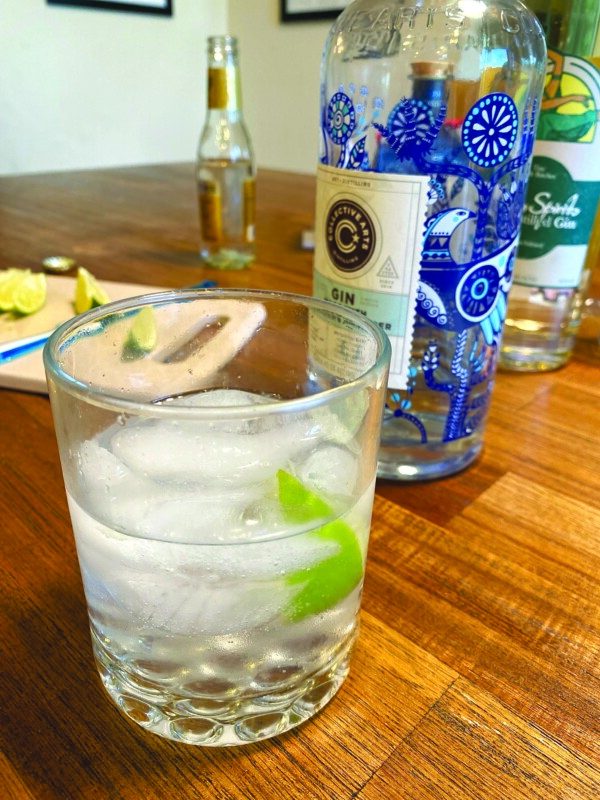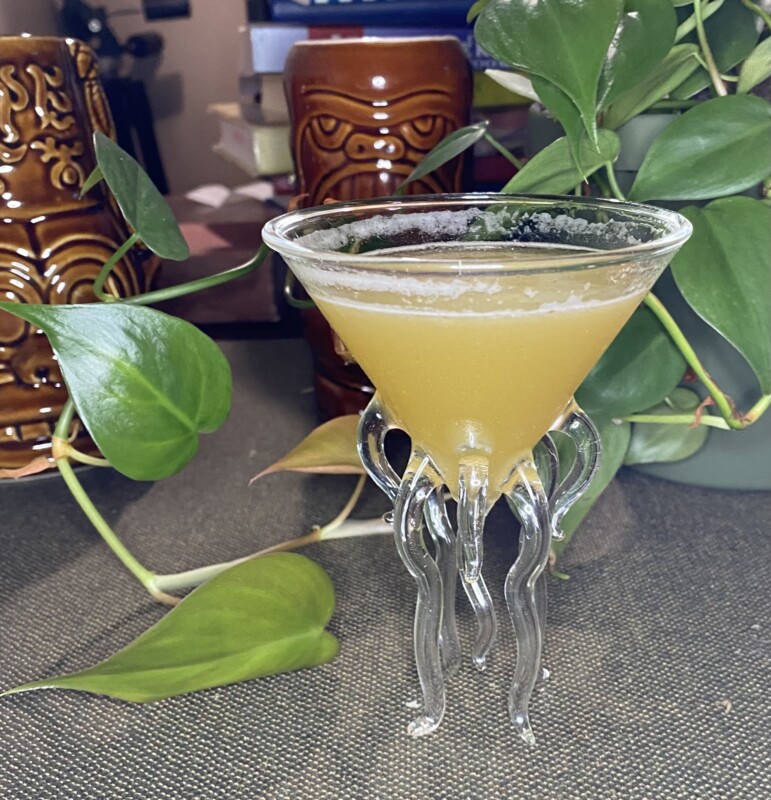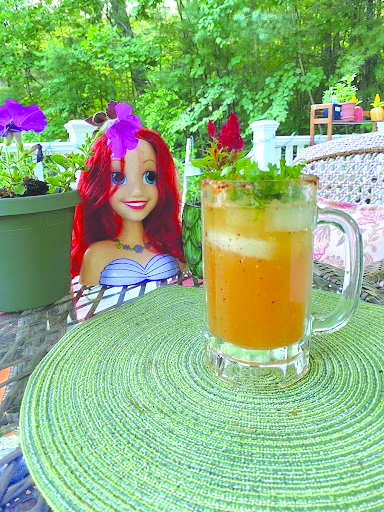A lot of us feel a crisis of confidence in December. We like to think of ourselves as imaginative, creative people, but then we find ourselves surrounded by actually creative people bringing their crafting A-games. We are inundated with pine cone wreaths, hand-knitted sweaters of llamas drinking eggnog, and festive crocheted door knob cozies. It’s enough to make a person anxious. It’s easy to say that nobody is crafting at you, but any time spent in book clubs or PTO meetings puts the lie to that.
Here is an easy way to win some crafting street cred.
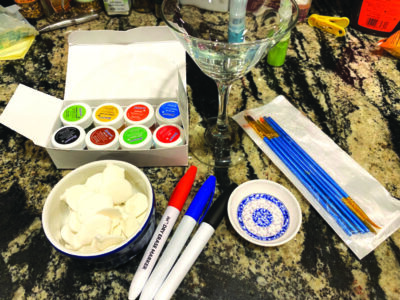
What you will need
Some white chocolate – I use white chocolate disks, made for bakers and candy-makers, but a bar of white chocolate from a convenience store would work just as well.
Powdered food coloring – Melted chocolate (you will be melting the chocolate) is extremely finicky. If it comes in contact with even a tiny amount of moisture, it will seize up. Liquid food coloring, and even gel, will make your chocolate very difficult to work with.
Something to stir your melted chocolate with – popsicle sticks are good for this, although the stem end of a spoon would work just as well.
A dry-erase marker. Also, tiny brushes to paint with.
Paper towels
A plain cocktail glass
Your overly excitable plastic container – see Hint No. 1
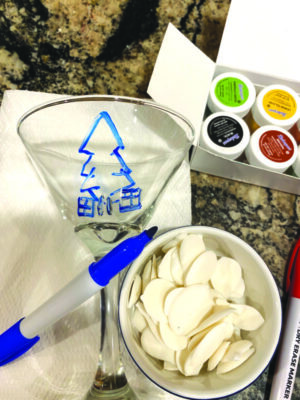
Using your dry-erase pen, draw a simple picture on the outside of your martini glass. Let’s try something fairly straightforward, a Christmas tree with a couple of presents.
OK, it’s not great. Don’t worry. This is one of the few times in your crafting life that you can be confident in the process. This will turn out well.
Put a small amount of white chocolate on your overly excitable plate. (In my case, it’s a tiny soy sauce dish, presumably for sushi.) Use a smaller amount of chocolate than you think you need. Heat it in the microwave for a surprisingly short amount of time, 15 seconds or so, to start.
Stir the solid-appearing chocolate. If your plate is as excitable as you think, the chocolate will quickly collapse into a molten state. If necessary, hit it with a few more seconds in the microwave.
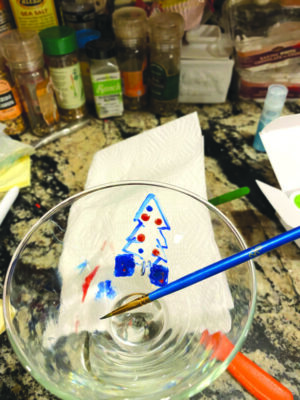
Stir a little powdered food coloring into your melted chocolate. Start with a small amount, then more, if necessary. Again, if the mixture is a bit stiff, a few more seconds in the microwave will loosen it up.
With your tiny paintbrush, paint the colored chocolate on the inside of the glass, using your drawing as a guide. Because you are painting on glass, think of this like a store window, where you will start with all the details in the foreground, then fill in the background later.
Let’s start with red ribbons on the presents and red ornaments on the tree.
Let’s add some details further in the background: blue presents and ornaments and a brown tree trunk. You could color the white chocolate brown, but I just melted a single chocolate chip and used that.
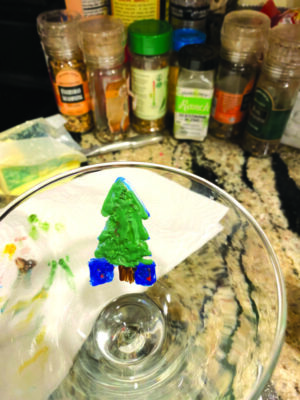
For the tree itself, I’m going to use two slightly different shades of green. I added a little yellow food coloring to one batch to lighten it up, then a tiny amount of black to darken another. Your first set of blotches will look, er, blotchy. Trust the process.
Hey, suddenly, this is all coming together!
Until you turn the glass around and look at it from the front.
No. Don’t panic. Trust the process. Wipe off the dry erase marker.
Wow. I mean, it’s not perfect, but it would totally shut up Simmons from Accounting at the office party.
You know what we need? A cocktail to go in it.
Pomegranate martini
- 2 ounces Pama Pomegranate Liqueur
- 2 ounces mid-shelf vodka – I’ve been enjoying New Amsterdam lately.
Pour both ingredients over ice in a cocktail shaker. Shake until you hear the ice start to shatter.
Pour your very cold drink into your newly decorated cocktail glass.
Considering it’s only got two ingredients, this is a surprisingly sophisticated drink. The sweet/sour fruitiness of the pomegranate hits you first but is replaced by a fairly bracing booziness from the vodka. The sourness of the liqueur activates your salivary glands, so you get a really “juicy” overall impression from it.
Now the question you are probably asking is, “Won’t the drink wash away the chocolate?”
Actually, no. Your drink is very cold, so the chocolate is unlikely to melt. And, remember when we talked about chocolate’s tendency to seize when exposed to liquid? We’re using that to our advantage here. The water content of the vodka, plus the diluted ice, panics the chocolate, which clings to the side of the glass for dear life.
If you rinse this glass out gently with very cold water, you can probably get three or four uses out of it.
Featured photo: Pomegranate Martini in hand painted glass. Photo by John Fladd.

